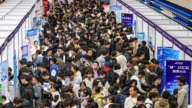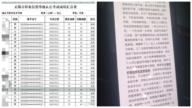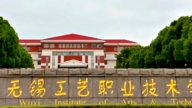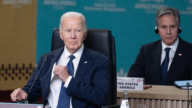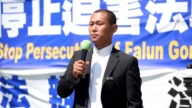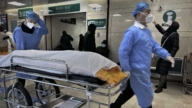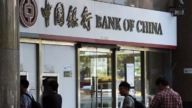【新唐人2012年1月30日讯】日本媒体报导,北京郊外一座核反应堆实验炉,在去年10月曾因发电机所在的建筑物发生事故,导致停止营运,中共却隐瞒不报。消息引起大陆民众恐慌,不少人高呼“求真相,拒隐瞒”。专家指出,在中共的专政体制下,核能安全技术很不安全。
“北京核反应堆实验炉因故停运”的消息被日本媒体曝光。
日本新闻网25号引述日本政府属下的原子能研究开发机构的消息,指出,北京郊外一座核实验堆,在去年10月曾发生事故停止运行,但中共却封锁消息。日本原子能机构经过调查后证实消息属实。
报导说,北京出现问题的核反应堆实验炉,去年七月刚开始发电,与日本福井核电站所使用的原子炉一样,属于高速增殖原型炉,使用浓缩铀作为燃料,但北京的核反应堆实验炉并没有防止核泄漏的覆盖容器,中央控制室内还有管理员休息的床,安全管理水准低落。
消息传开后,引起大陆网民恐慌。有网民表示:一方面是大规模的建设核电设施,另一方面又对这些核设施监管不力,甚至隐瞒事故不报,实在令人担忧。
除了担忧的声浪,民众忍不住炮轰:报喜不报忧是中共当局惯用的愚民手段。而官媒丧失职业操守、不顾大众利益,自觉配合当局需要而隐瞒真相,助纣为虐,尤其可恨!
网民要求当局尽快回应事件,以免民众担惊受怕。
25号晚上,大陆媒体引述“中国原子能科学院”院长万钢的话说,位于北京的核反应堆并没有运行。
据香港《东方日报》1月26号报导:出事实验炉属于国家863高技术研究发展计划重大项目——中国实验快堆工程(CEFR)。
大陆媒体曾经报导,这项工程由大陆自主研发、设计、建造和运行,并与俄罗斯技术合作。去年七月,工程首次实现并网发电,俄罗斯媒体也有报导。
英国BBC中文网指出,“原子能科学研究院”位于北京房山区,在市中心西南约40公里,“快堆”就建在其中,目前发电功率为20兆瓦。
原“中国环境保护部核与辐射安全中心”教授李旭彤表示,80%核反应堆的事故,是人为因素引起的,所以真正决定安全与否,还是取决与人的问题。
李旭彤:“这也是大家最担心的一个问题、全世界最关心的问题就是:你是不是一下有那么多的合格的技术专家?你(中共)现在整个的国家的体制,就是让它这么腐败,各方面都没有一个严肃认真的科学态度。现在中国共产党统治下,这种体制更难以有一种科学的标准和态度。”
李旭彤认为,中共那麽多年来从来没有报导核反应堆的事故,不是没有发生,而是封锁消息。他以前苏联为例,在苏共的统治下,也是不报导核泄漏事故,但在苏联解体后全都曝光了。
李旭彤:“苏联当时它在乌拉尔山那儿有一个世界最严重的事故,但是当时大家多少年都不知道。不同的国家都对这个事情,从露出的一些蛛丝马迹都有怀疑,但是都没有法证实。一直到苏联解体,那个铁幕打开以后,才有他的内部人员把这个事故暴露出来、披露出来。”
1月27号,有媒体报导说,日本原子能机构在官方网站上发表声明,表示日本《产经新闻》有关“中国快中子反应堆事故”的报导,并非基于原子能机构的官方信息,对这一信息透露给媒体,原子能机构表示十分遗憾。
新唐人记者赵心知、吴惟、葛雷综合报导。
Safety concerns over management of CCP nuclear plants.
Japanese media have reported a nuclear reactor located on
the outskirts of Beijing had stopped running last October.
This was due to an accident in the generator building, but
was never announced by the CCP, who concealed the truth.
Civilians were panicked by the news, with many of them
calling for truth and refusing to be deceived any more.
Experts have commented that nuclear safety cannot be
guaranteed under the CCP’s dictatorship.
On Jan 25, Japanese media revealed that an experimental
nuclear reactor in Beijing stopped operation due to accident.
Japan News Network (JPN) cited Japan Atomic Energy
Agency (JAEA).
An experimental nuclear reactor, in a Beijing suburb, had
once stopped running due to an accident last October.
The CCP regime, however, had tried to hide the truth. JAEA
confirmed this news to be true after investigation.
The report said that, the malfunctioned nuclear power plant
first began generating power last July.
The nuclear reactor is a fast-breeder type that uses
enriched uranium as fuel.
The plant is the same as Japan’s Fukui nuclear plant, but
there’s no covering shield to stop leakage in Beijing’s reactor.
There are even beds in the central control room for people
to rest, evidence of a very bad level of safety management.
Such news has panicked Chinese netizens.
Some said that, on one hand authorities built nuclear plants
on a massive scale plants.
On the other hand, they were not capable of managing the
safety of those facilities.
Considering that these nuclear accidents had been
concealed, they could not help worrying.
Many Chinese also sharply criticized the CCP’s propaganda
strategy of “reporting only the positive, never the negative”.
Criticism is directed towards official media, which discards
professional integrity and public welfare to conceal the truth.
Some remarked that these media are extremely detestable,
since they helped the bad people.
The netizens also called for an immediate reply from the
government to relieve their panic.
In the evening of January 25th, some Chinese media cited
Wan Gang, Head of China’s Institute of Atomic Energy.
The nuclear plant in Beijing was not running at that time.
According to Oriental Daily News on Jan 26, the
malfunctioned plant was developed under the China
Experimental Fast Reactor (CEFR) project, which is subject
to the State High-Tech Development Plan (863 Program).
Chinese media reported that, the design, development,
building and operation of CEFT was carried out by China.
There was some technical cooperation with Russia.
Last July, the project managed to generate power for the first
time, which was also reported by some Russian media.
bbc.co.uk/Chinese reports that China Institute of Atomic
Energy is located in Fangshan district, southwest of Beijing.
This is 40 kilometers from downtown Beijing. The “Fast
Reactor” was built there, producing up to 20 MW of power.
Li Xutong, ex-professor of China’s Department of Nuclear
Safety, State Environmental Protection Administration, said
that 80% of nuclear accidents are man-induced; so human
factors are the most crucial in nuclear safety management.
Li Xutong:”What worries Chinese people, as well as the
global society is whether the CCP has enough qualified experts [to manage nuclear safety].
The national regime has been corrupted by the CCP to such
an extent that, you can hardly find any serious or scientific attitude towards real problems.
Any scientific standard can hardly survive under
the CCP’s dictatorship.”
Li Xutong believes that the CCP never reports any nuclear
Accidents.
This is not because they don’t happen, but because they
forbid such news to be reported to the public.
Li mentioned the Soviet Union as an example. All nuclear
accidents were never reported under its governing.
Nevertheless, they were all revealed after its dissolution.
Li Xuntong:”In USSR, there was once a most severe nuclear
accident near the Ural Mountains.
However, nobody knew about it for many years. Many
countries had suspicion about what happened.
However, they could not confirm it until dissolution of the
USSR.
It is after the dictatorship regime broke down that some
insiders told the whole world about truth of the accident.”
On Jan27, it is reported that Japan’s Atomic Energy Agency
(JAEA) issued an official statement on its website.
It states Sankei Shimbun ‘s news on China’s Fast Neutron
Reactor accident was based on “unconfirmed and
inadequate" information. It said it “is extremely regrettable
that such unconfirmed information went out to news media."
NTD reporters Zhao Xinzhi, Wu Wei and Ge Lei



